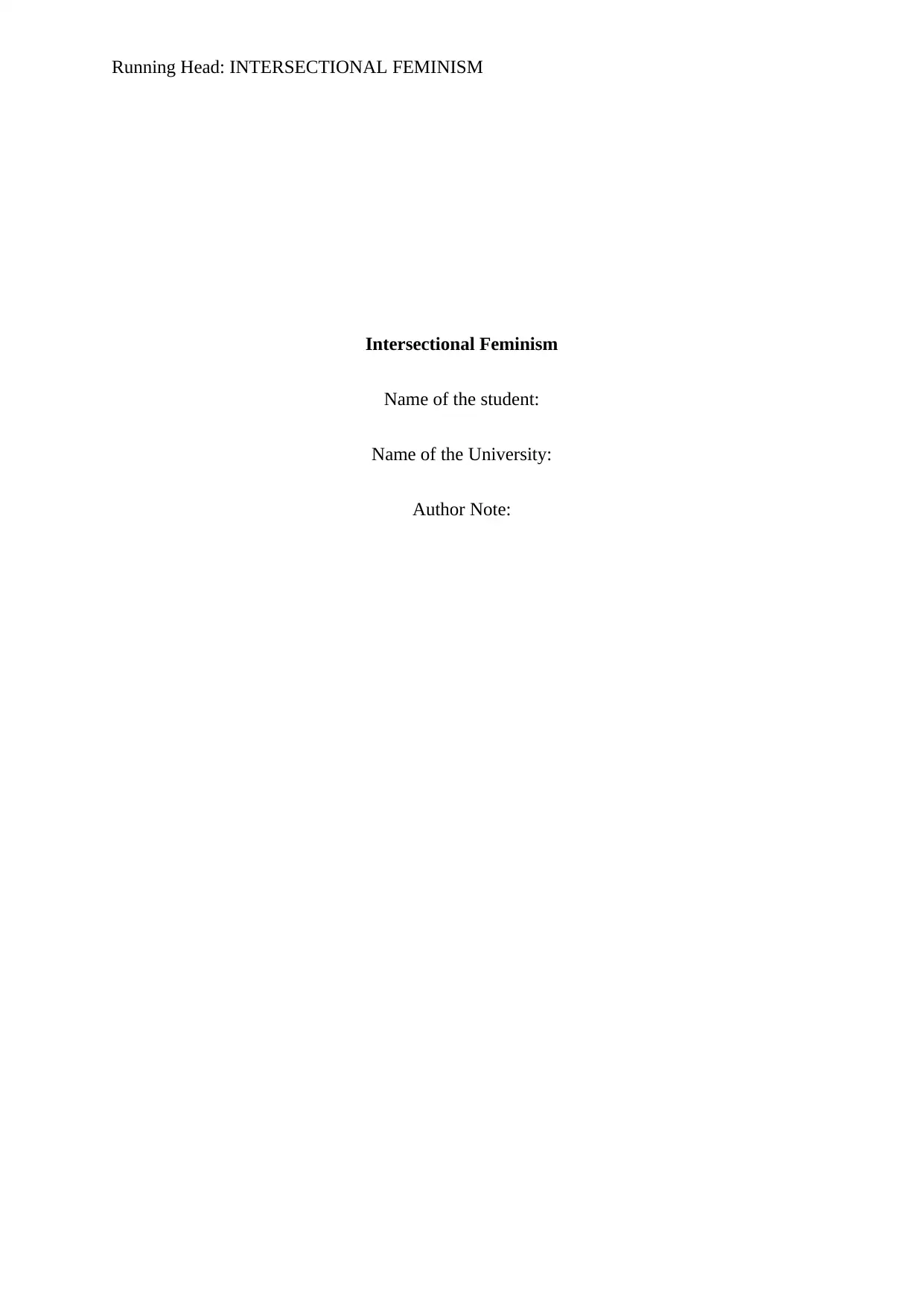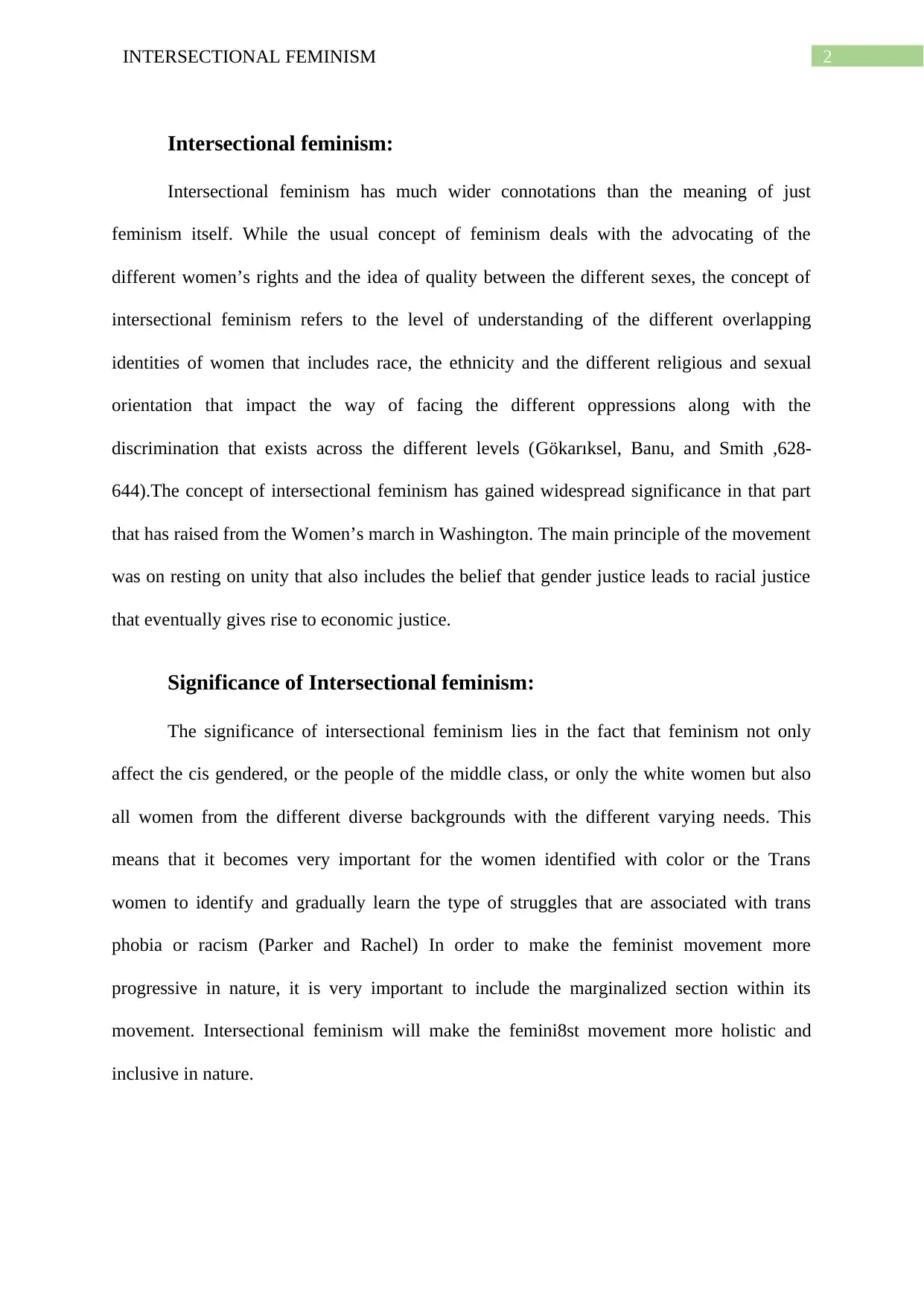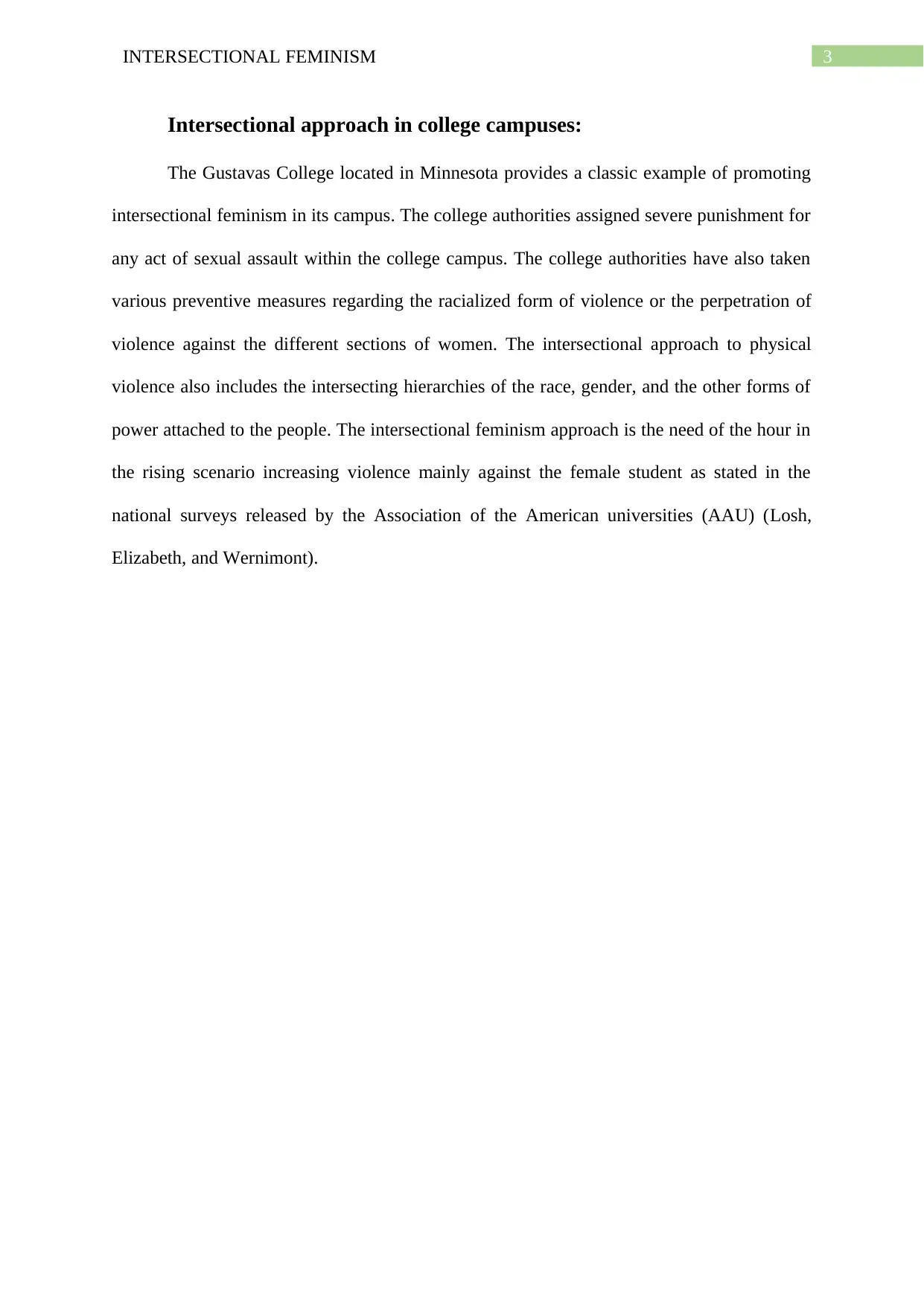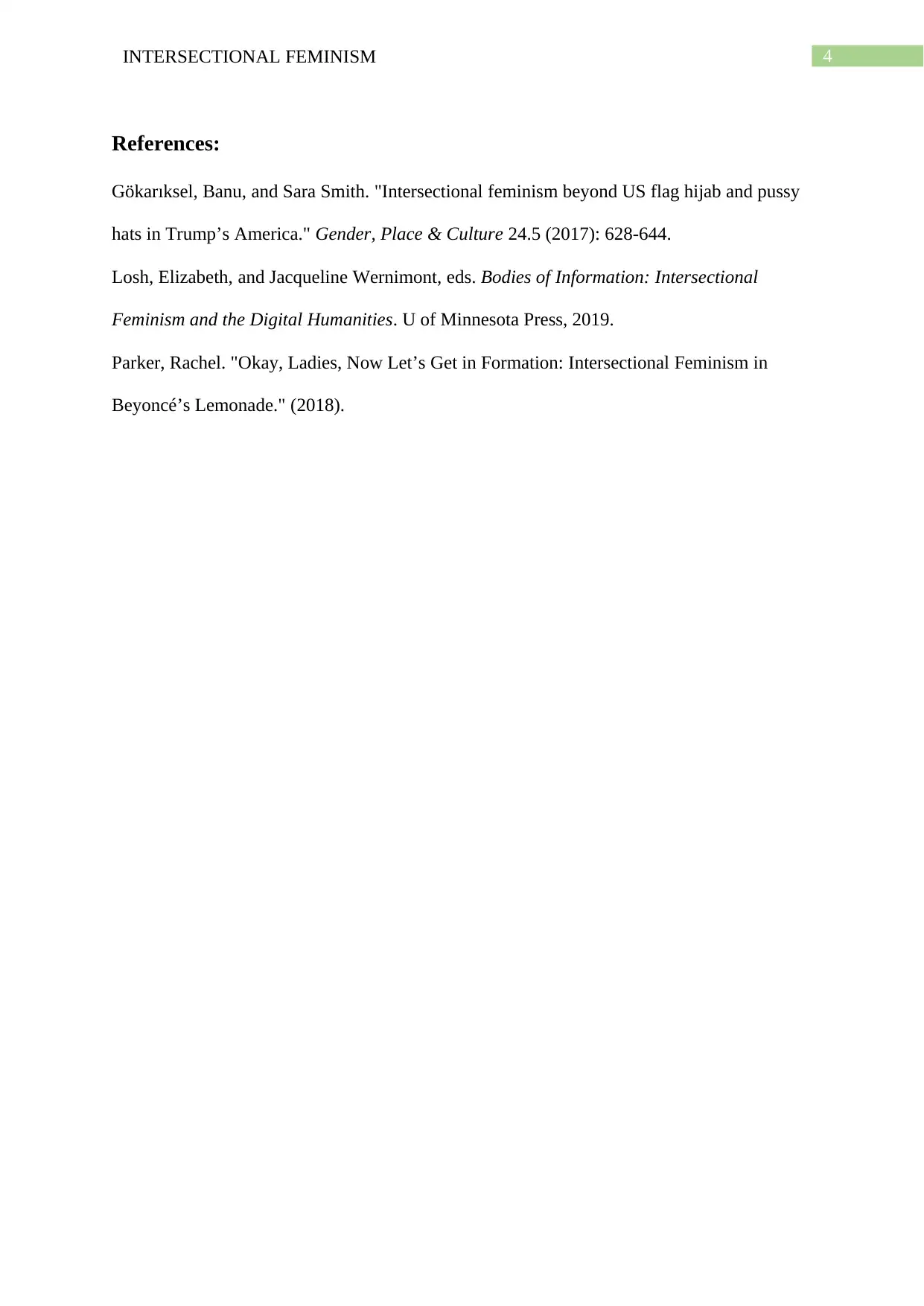Analyzing Intersectional Feminism: Identity, Justice, and Inclusion
VerifiedAdded on 2022/08/18
|4
|553
|103
Essay
AI Summary
This essay provides a comprehensive overview of intersectional feminism, defining it as a framework that recognizes the overlapping identities of women, including race, ethnicity, religion, and sexual orientation, and how these identities shape their experiences of oppression and discrimination. It emphasizes the movement's significance in addressing the needs of women from diverse backgrounds, advocating for inclusivity and highlighting the importance of incorporating marginalized voices into feminist discourse. The essay also presents a case study of Gustavus College in Minnesota, illustrating how an intersectional approach is applied to address issues such as sexual assault and racialized violence on campus, aligning with national surveys on violence against female students. The analysis underscores the necessity of intersectional feminism in promoting a more holistic and progressive feminist movement.
1 out of 4





![[object Object]](/_next/static/media/star-bottom.7253800d.svg)